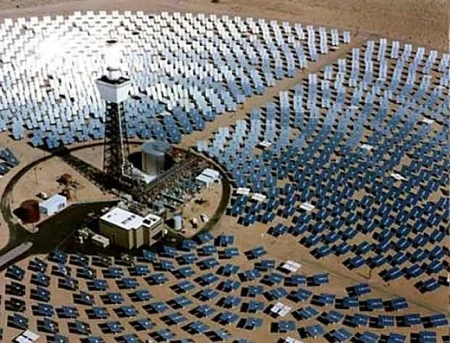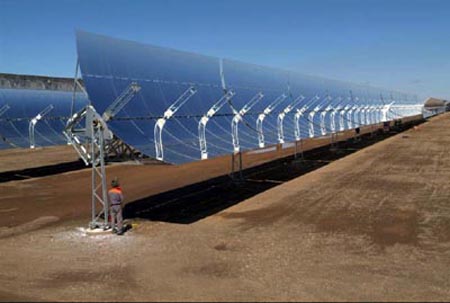Are big solar and wind – like oil and gas – ready to compete to use resources on federal lands?
The U.S. Department of the Interior thinks so, announcing that the industry and the public have until Feb. 27 to comment on how the department’s Bureau of Land Management (BLM) might go about implementing a competitive lease process for the two big forms of clean energy.

Under President Obama, the BLM has been handing out approvals for renewable energy right-of-ways at record pace. As EarthTechling’s Susan Kraemer recently wrote, the Obama administration’s BLM has approved 27 utility-scale renewable energy projects amounting to 6.6 gigawatts (GW) of generating capacity: 16 solar projects, four wind farms and seven geothermal plants.
The approvals have come under an accelerated process that requires environmental review and sign-off from other agencies, but no competitive bidding to gain the rights to a site (although rent is charged if a project is developed). It’s basically first come, first served.
But in an “Advance Notice of Public Rulemaking” [PDF], BLM said it “believes that a competitive process would enhance its ability to capture fair market value for the use of public lands,” as required by law, while ensuring “fair access to leasing opportunities for renewable energy development.”
The acknowledgement that BLM might not be getting all it can for the use of public lands by solar and wind developers was notable given that a recent Department of Defense study on possible development of military base land in the California desert concluded, “BLM’s solar land lease rates could increase substantially and still provide an attractive rate of return for private developers.”
BLM said the rules it is considering “would establish competitive bidding procedures for lands within designated solar and wind energy development leasing areas, define qualifications for potential bidders, and structure the financial arrangements necessary for the process.”
The idea of designating areas for development isn’t new. “Solar energy zones” – which the BLM sees as “areas that have been identified as the most appropriate for development because they contain the highest solar energy potential and fewest environmental and resource conflicts” – were proposed by the administration in 2010, then revised in October 2011, with BLM trimming the number of zones in Arizona, California, Colorado, Nevada, New Mexico and Utah from 24 to 17, and reducing the number of acres in play from 677,000 to 285,000.
The solar industry has been less than enthralled with the zones concept. Solar Energy Industry Association chief Rhone Resch said last October “there are some significant areas of concern regarding the viability of a solar-energy zone approach. Siting flexibility and access to transmission are key to the financing and development of utility-scale solar power plants.”
Representatives from the group (as well as the American Wind Energy Association) did not respond to EarthTechling’s request for reaction to BLM’s move to implement zones as part of a competitive leasing scheme, but proposals for any new regulatory scheme always bring out the lawyers and the lobbyists for the affected industries, so both groups and others will no doubt be heard.

And, indeed, the giant international law firm Latham & Watkins, writing about the BLM proposal on its Clean Energy Law Report blog, said bluntly: “BLM’s proposal has the potential to impact not only project proponents’ ability to site solar and wind energy projects on public lands, but also the costs, terms and conditions of doing so. Entities with an interest in these areas should consider participating actively in this process.”
Among the issues BLM invited comment on: how the competitive process would be structured; how long leases would run; how fees would be determined; whether competitive leasing could happen outside the designated zones; what due diligence requirements should be included for developers in competitive leases; and more.
You can read the full statement from BLM and comment online here.






